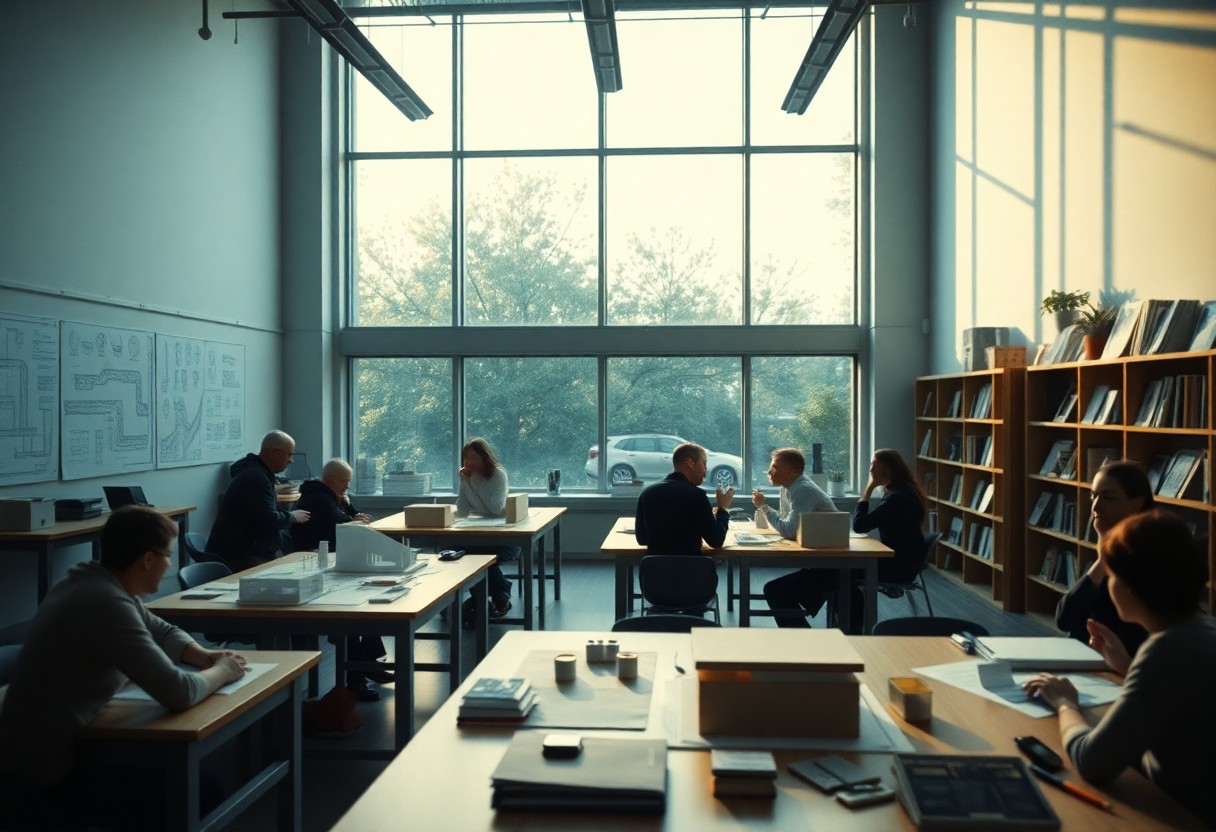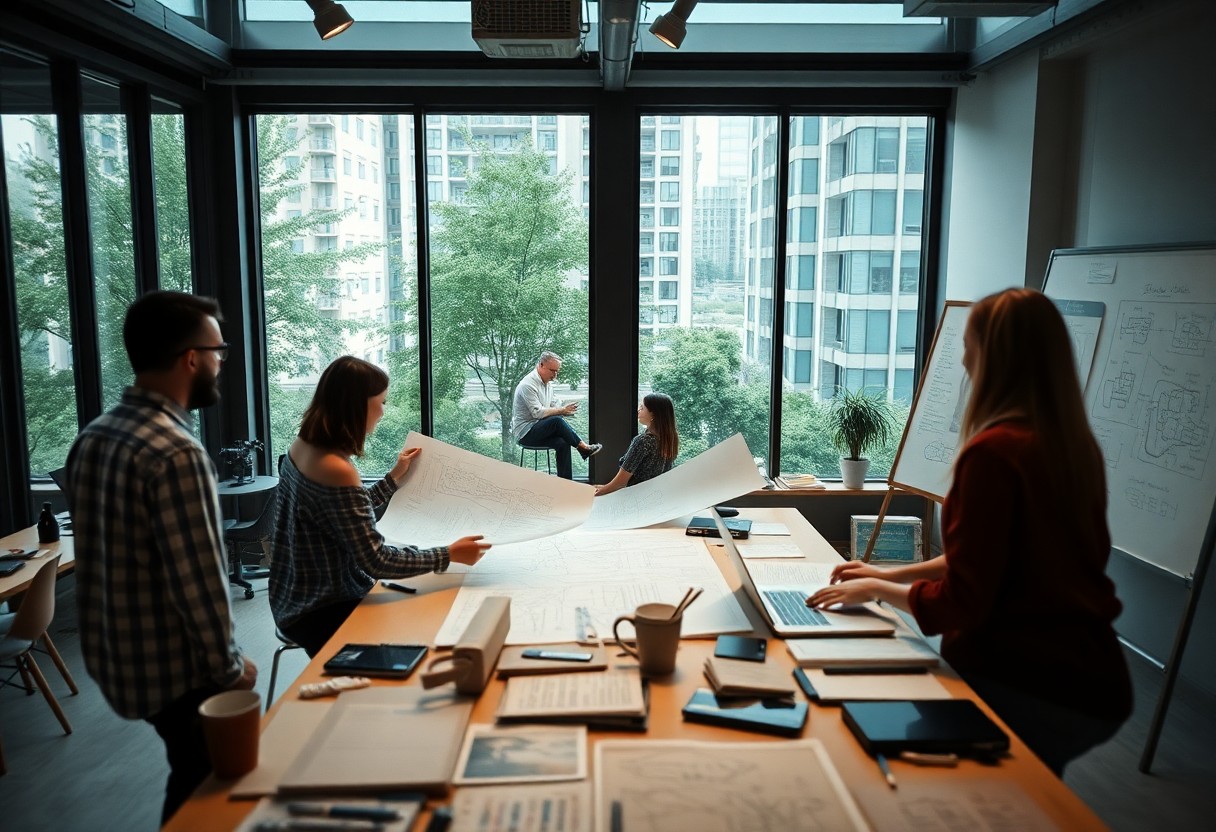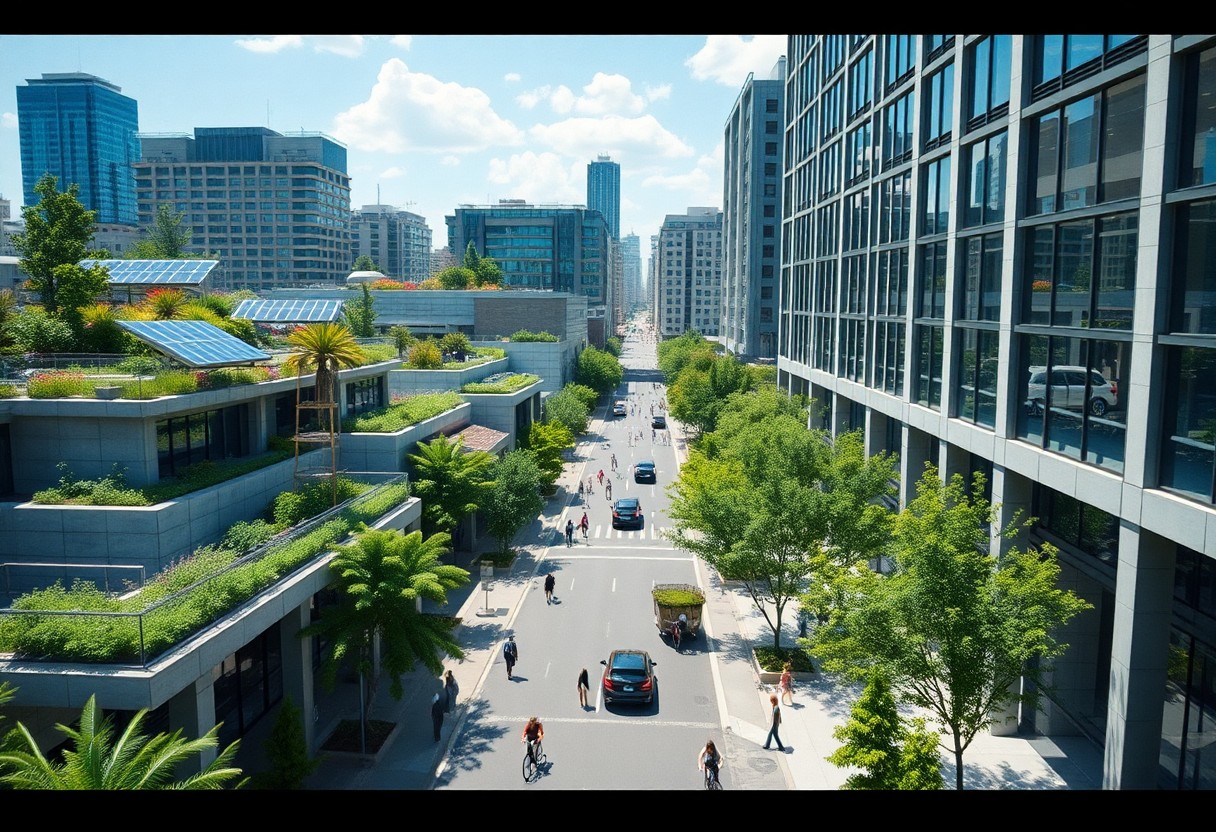Environmentally conscious design is becoming increasingly important in today’s world, making a Master of Environmental Design (MED) a valuable degree for aspiring professionals like you. The MED equips you with the skills to create sustainable, innovative spaces that address societal and ecological challenges. This interdisciplinary program covers a range of topics, from landscape architecture to urban planning, allowing you to effectively engage with and influence the built environment. By pursuing an MED, you position yourself as a leader in the movement toward enhanced environmental stewardship and community well-being.
Key Takeaways:
- The Master of Environmental Design (MED) program focuses on interdisciplinary approaches to environmental issues, integrating design, planning, and policy-making.
- Students gain hands-on experience through projects and collaborations that address sustainable solutions for urban and rural environments.
- The curriculum emphasizes critical thinking and innovative problem-solving, preparing graduates for diverse careers in design, conservation, and environmental consultancy.
Unpacking the Role of Environmental Designers
Environmental designers play a pivotal role in shaping sustainable spaces that harmonize with nature while meeting human needs. By integrating principles of architecture, landscape design, urban planning, and environmental science, you create environments that promote well-being and sustainability. This multifaceted discipline requires you to navigate complex systems and collaborate with stakeholders, ensuring that projects are not only aesthetically pleasing but also ecologically responsible.
The Interdisciplinary Nature of Environmental Design
The field of environmental design uniquely blends various disciplines, allowing you to draw knowledge from architecture, ecology, psychology, and urban planning. This fusion equips you with a diverse toolkit to address challenging environmental issues and client needs effectively. For instance, understanding ecological principles can directly inform your design decisions, ensuring that landscapes enhance local biodiversity while providing functional spaces for people.
Key Responsibilities and Skills Required
Your responsibilities as an environmental designer include conducting site assessments, developing sustainable design proposals, and collaborating with clients and contractors. Strong analytical skills are crucial for evaluating environmental impacts and understanding regulations. Moreover, proficiency in design software, alongside effective communication skills, will allow you to articulate your vision clearly and address stakeholders’ concerns effectively.
In your role, balancing creativity with technical expertise is vital. You’ll be tasked with interpreting client needs and translating them into innovative designs while adhering to environmental regulations and sustainability principles. Additionally, developing project timelines and managing budgets are crucial components. As you progress, enhancing your knowledge in sustainable technologies, materials, and ecological systems will provide you with a competitive edge. Staying updated with the latest trends and research in environmental design helps you address contemporary challenges, ultimately enriching your practice and ensuring your projects resonate with both people and nature.

The Educational Pathway to Mastery
The journey toward mastering environmental design encompasses a multifaceted educational experience. This pathway typically includes a blend of core curriculum components, practical experience, and specialized projects that shape your expertise in sustainable design practices and environmental stewardship. Your commitment to developing a comprehensive understanding of ecological principles, design aesthetics, and social responsibilities will be imperative as you advance through your studies.
Core Curriculum Components of an MED Program
An MED program typically features a core curriculum that integrates design theory, environmental science, urban planning, and policy-making. You will engage with courses focused on sustainable architecture, landscape ecology, and community engagement. Through these subjects, you will build a solid foundation that emphasizes the interconnection of ecological systems with contemporary design practices, equipping you with the knowledge needed to enact meaningful change.
Practical Experience and Internships: Bridging Theory and Application
Hands-on experience is integral to your development in an MED program, providing opportunities to apply theoretical knowledge in real-world contexts. Internships often complement your academic learning by immersing you in professional environments where you can tackle current environmental challenges and contribute to innovative design solutions.
Engaging in internships tailored to environmental design allows you to work alongside industry professionals and gain insights into project management, client relations, and sustainable practices firsthand. Many programs partner with organizations dedicated to environmental initiatives, meaning you may help design urban green spaces, or participate in community revitalization projects. These practical experiences not only enhance your resume but also help you build a professional network that can be invaluable throughout your career, empowering you to turn your design aspirations into impactful realities.

Navigating Career Opportunities in Environmental Design
With the rise of sustainability as a global priority, career opportunities in environmental design are expanding across various sectors. Your skills will be valuable in urban planning, landscape architecture, sustainable development, and environmental consulting, among others. Professionals in this field are increasingly sought after by government agencies, non-profits, private firms, and academic institutions. As industries pivot towards eco-friendly practices, the demand for innovative thinkers who can blend design with environmental stewardship has never been greater.
Diverse Sectors and Industries Seeking Environmental Designers
Multiple sectors are on the lookout for talented environmental designers. From architecture and urban design to renewable energy and conservation, companies are integrating environmentally conscious practices into their core operations. Businesses within real estate, government planning, and environmental advocacy organizations also need your expertise to create sustainable strategies that improve quality of life while minimizing ecological footprints. The breadth of opportunities is vast, providing a landscape for various interests and specialties.
Emerging Roles: The Future of Environmental Design
As environmental challenges evolve, so too do the roles within the field of environmental design. Positions such as sustainability coordinator, green building consultant, and climate adaptation specialist are becoming increasingly relevant. The integration of technology, such as smart city planning tools and augmented reality in design visualization, is reshaping how designers approach projects. This shift indicates that combining traditional design knowledge with tech-savvy skills will be important in your career moving forward. The emergence of these specialized roles aligns with global objectives to combat climate change, emphasizing the importance of your contributions to creating a more sustainable future.
Your future in environmental design will be marked by an increasing integration of digital tools and sustainable practices. The rise of new technologies—like drone surveying for site assessments or advanced modeling software for energy-efficient building design—will enable you to offer innovative solutions tailored to contemporary challenges. Specialized roles in eco-urbanism and regenerative design, among others, demonstrate the breadth of your potential impact. Engaging in continuous education and understanding emerging trends will position you as a leader in the evolving landscape of environmental design. As sustainability becomes more pivotal in both public and private sectors, your expertise will play a critical role in shaping future environments.
Integrating Sustainability into Design Practices
As a Master of Environmental Design student, you will explore approaches that embed sustainability into various design practices. This includes evaluating resource-efficient materials, improving energy performance, and enhancing the overall ecological footprint of your projects. You’ll engage with concepts such as circular economy and biophilic design, allowing you to create spaces that not only satisfy design aesthetics but also promote environmental stewardship. By integrating sustainable methods into your design processes, you forge a path toward innovative solutions that address pressing environmental challenges.
Innovative Approaches to Sustainable Design
Adopting innovative strategies in sustainable design involves leveraging advanced technologies and practices that reduce waste and maximize efficiency. You might explore into adaptive reuse, which breathes new life into existing structures, or explore the potential of renewable energy systems, such as solar panels, to power your projects sustainably. Emerging materials like mycelium or recycled plastics can also be utilized in modern design, showcasing your commitment to eco-conscious choices that resonate with current sustainability trends.
The Impact of Environmental Policy on Design Decisions
Design decisions are profoundly influenced by environmental policies at local, national, and international levels. As a designer, your work must align with regulations such as the LEED certification standards, which set benchmarks for environmentally friendly building practices. Compliance with these policies not only ensures legal adherence but also enhances the marketability of your designs, appealing to increasingly eco-aware clients.
Environmental policies, such as the Green Building Act, delineate specific requirements that guide your design choices. For instance, they might mandate specific energy efficiency targets, call for sustainability assessments, or promote green materials usage. Familiarizing yourself with these regulations gives you a competitive edge, as you navigate the complex landscape of eco-friendly design. Additionally, policies often drive funding opportunities, tax incentives, and community support that can augment your project’s viability and overall impact, enabling you to make a difference in promoting sustainability at every level of design.
Challenges Facing Environmental Designers Today
Environmental designers encounter numerous challenges as they strive to create sustainable spaces. Increasing urbanization often pressures designers to sacrifice eco-friendly principles for rapid development. Additionally, limited funding for green initiatives and the slow pace of legislative change can hinder innovative design solutions. Designers also face the daunting task of balancing aesthetic appeal with environmental impact, often requiring creative problem-solving to meet diverse stakeholder expectations. Finally, the urgency of climate change compels designers to act quickly while ensuring their strategies remain effective long-term.
Addressing Climate Change through Design
To combat climate change, environmental designers must embrace innovative solutions that reduce carbon footprints. Techniques such as passive solar design, green roofs, and the integration of renewable energy sources can significantly enhance the sustainability of projects. By prioritizing material selection, water conservation, and energy efficiency, you can contribute to the creation of resilient spaces that mitigate the effects of climate change while fostering healthier environments.
Ethical Considerations in Environmental Design
Ethical considerations are paramount in environmental design, as your decisions can significantly impact the community, environment, and future generations. Striking a balance between aesthetics and functionality while ensuring that your designs promote social equity and environmental justice is vital. Emphasizing local materials and labor also contributes to sustainable practices, while fostering a sense of community ownership and pride in the built environment.
Exploring ethical considerations goes beyond mere compliance with regulations. You examine into the social responsibilities that come with design choices—ensuring that marginalized communities have a voice in the design process, preventing environmental degradation, and advocating for social and ecological justice. By collaborating with local stakeholders and embracing transparency in the decision-making process, you can create designs that not only meet the needs of the present but also protect the rights and resources of future generations. Strong ethical practices foster trust between designers and communities, and propel the environmental design field forward in a meaningful direction.
Summing up
On the whole, pursuing a Master of Environmental Design (MED) equips you with interdisciplinary skills to tackle complex environmental challenges. This advanced degree not only enhances your design knowledge but also deepens your understanding of sustainability, urban planning, and ecological systems. By engaging in practical projects and research, you empower yourself to create innovative solutions for the built environment. As you launch on this journey, you position yourself as a leader in promoting environmentally responsible design practices that can significantly impact communities and ecosystems alike.

